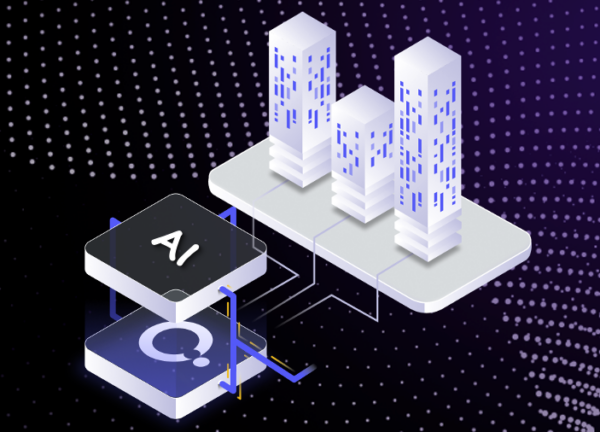Description
Reframing GPU-Oriented Infrastructure as a First-Class Discipline
Overview
As AI workloads become central to business innovation, the infrastructure powering them, specifically GPU environments, must evolve from ad hoc provisioning to intentional, automated, and policy-governed delivery. GPUs are not simply more powerful CPUs; they have unique scheduling, lifecycle, and cost constraints that traditional infrastructure tooling does not accommodate.
This report defines the essential capabilities required to manage GPU infrastructure as a distinct, automation-first discipline. Drawing from platform engineering trends, AI operational patterns, and enterprise pain points, it evaluates technology categories and positions GPU infrastructure automation as foundational to AI success at scale
Key Findings (Observations)
- GPUs Are Scarce and Expensive: GPU resources are often shared, quota-bound, and in limited supply. Misallocation leads to massive cost waste and opportunity loss.
- General-Purpose Tools Fall Short: IaC, CMPs, and orchestration platforms built for CPU-bound workloads lack GPU awareness, including scheduling, monitoring, and right-sizing.
- Provisioning Alone Isn’t Enough: Infrastructure delivery must include dynamic scaling, usage enforcement, auto-reclamation, and cost tracking to fully optimize GPU usage.
- Workload-Aware Policies Are Essential: GPU environments must adapt to training vs. inference needs, enforce duration/cost limits, and support multi-tenant use.
- Execution Must Be Substrate-Native: GPU automation must work across VM-based clusters, bare-metal servers, and cloud-native containers, adapting to the substrate context.
Recommendations
- Treat GPU infrastructure as a separate automation domain, not a subcategory of general compute.
- Adopt platforms that natively support GPU scheduling, provisioning, scaling, and enforcement.
- Integrate cost visibility and runtime governance into environment definitions, not as an afterthought.
- Enable policy-driven provisioning to align GPU usage with business priorities and workload phase.
- Benchmark tooling based on its GPU-specific capabilities, including quota awareness, telemetry integration, and shutdown automation.
Critical Capabilities for GPU Infrastructure Automation
- GPU-Aware Provisioning: Assign GPUs dynamically based on workload type, phase (training/ inference), and resource availability.
- Workload-Driven Scaling: Scale GPU environments up/down based on model complexity, real-time demand, or utilization patterns.
- Quota & Access Governance: Enforce limits on GPU usage by team, user, or project; prevent resource hogging or idle allocations.
- Multi-Substrate Orchestration: Manage GPU workloads across VM clusters, bare metal, and container-native platforms.
- Runtime Policy Enforcement: Apply rules for duration, cost, and activity status; trigger auto-shutdowns or alerts.
- Cost Visibility & Optimization: Monitor GPU usage in real time; report on efficiency and automate reclamation of idle instances.
- Self-Service GPU Environments: Enable developers and data scientists to launch governed GPU environments via UI/API.
- Integration Extensibility: Connect GPU automation to MLOps tools, CI/CD pipelines, and observability platform.
Capability Comparison Across Tool Categories
How to Interpret Capability Scores: The following capability scores use a 1–5 qualitative scale to reflect the maturity and fit of each tool category against GPU-specific automation needs. These are not absolute performance metrics, but directional assessments based on how well each category supports GPU workload automation and governance.
- = Rudimentary or Absent Capability: Basic or nonexistent support for this function. Often general-purpose tools.
- = Emerging / Partial: Offers limited GPU functionality or requires heavy customization.
- = Functional: Provides usable GPU support but lacks contextual intelligence, scaling, or policy automation.
- = Advanced: Solid GPU capabilities with broad support, but not deeply optimized.
- = Purpose-Built / Best-in-Class: Designed with GPU infrastructure in mind. Native support for automation, governance, and extensibility.
These ratings are synthesized from vendor capabilities, category patterns, and alignment to the “critical capabilities” defined in the Critical Capabilities section.
| Capability | IaC Tools | CMPs | Container Orchestration | MLOps Platforms | IPEs |
| GPU Aware Provisioning | 1 | 2 | 3 | 4 | 5 |
| Workload-Driven Scaling | 1 | 2 | 3 | 4 | 5 |
| Quote & Access Governance | 1 | 3 | 2 | 3 | 5 |
| Multi-Substrate Orchestration | 1 | 2 | 3 | 3 | 5 |
| Runtime Policy & Optimization | 1 | 2 | 2 | 3 | 5 |
| Cost Visibility & Optimization | 1 | 2 | 2 | 4 | 5 |
| Self-Service GPU Environments | 2 | 3 | 3 | 4 | 5 |
Integration Extensibility | 2 | 3 | 4 | 4 | 5 |
Comparative Analysis of Tool Categories
- Infrastructure as Code (IaC) Tools: IaC tools like Terraform provide repeatable provisioning but lack GPU scheduling, runtime controls, or quota enforcement. Not GPU-aware.
- Cloud Management Platforms (CMPs): These tools offer governance and visibility but often treat GPUs as generic VMs. Limited real-time automation or workload alignment.
- Container Orchestration Platforms: Kubernetes and similar tools can run GPU containers, but they require manual configuration, lack quota policies, and don’t optimize cost.
- MLOps Platforms: Offer good integration with model workflows, but focus on pipelines and experiment tracking, not GPU infrastructure automation.
- Infrastructure Platforms for Engineering (IPEs): IPEs are uniquely positioned to unify provisioning, scaling, governance, and observability of GPU environments. Purpose-built for hybrid substrates and GPU lifecycle management.
The Role of Torque
Torque provides a GPU-native execution layer that abstracts infrastructure complexity while optimizing resource governance. It supports workload-aware provisioning (training vs. inference), enforces runtime policies, and integrates real-time GPU telemetry to automate scaling and cost control.
Through its environment-centric model, Torque empowers platform teams to offer GPU-as-a-Service to internal users, complete with quotas, expiration policies, and multi-substrate compatibility. With integration hooks across MLOps pipelines and observability tools, Torque ensures that GPU usage is aligned with business goals, not just provisioning scripts.
As AI accelerates, Torque delivers the automation backbone that transforms GPUs from a scarce bottleneck into a governed, dynamic infrastructure layer.
Evaluation
Critical Capabilities for GPU Infrastructure Automation
Introduction: How to Use This Framework
GPU Infrastructure Automation addresses the provisioning, orchestration, and governance challenges unique to GPU-powered environments. Unlike traditional compute, GPUs introduce constraints in cost, availability, scheduling, and observability that demand specialized automation. This framework allows enterprises to evaluate their readiness to support AI and ML workloads at scale through automated, policy-driven GPU infrastructure.
This framework enables enterprises to:
- Identify operational and governance gaps in managing GPU infrastructure.
- Measure maturity across critical GPU-specific automation capabilities.
- Understand business value tied to efficient GPU utilization.
- Evaluate readiness to deliver GPU-as-a-Service.
Each capability includes a description, measurement criteria, expected business results, and a 1–5 maturity scale.
Critical Capabilities for GPU Infrastructure Automation
GPU-Aware Provisioning
- Description: Dynamically allocate GPU resources based on job type (training, inference), resource class, and environment type.
- Measurement Criteria: Are GPU requests manual or dynamically orchestrated based on workload context?
- Business Value: Improves efficiency, accelerates provisioning, aligns usage with business priorities.
Evaluation:
□ 1 – None
□ 2 – Manual, ticket-based provisioning
□ 3 – Scripted templates per job type
□ 4 – Dynamic provisioning with some workload context
□ 5 – Fully automated, policy-driven, GPU-type-aware provisioning
Workload-Driven Scaling
- Description: Automatically scale GPU resources up or down based on workload demand and runtime telemetry.
- Measurement Criteria: Is scaling reactive, periodic, or real-time and usage-aware?
- Business Value: Optimizes cost, reduces idle GPU time, supports burst demand.
Evaluation:
□ 1 – None
□ 2 – Manual scaling actions
□ 3 – Scheduled autoscaling only
□ 4 – Telemetry-aware scaling in select clusters
□ 5 – Real-time workload-driven scaling across environments
Quota & Access Governance
- Description: Enforce GPU quotas and access controls by user, team, or project.
- Measurement Criteria: Are GPU resources open, quota-bound, or dynamically governed?
- Business Value: Ensures fairness, prevents resource hoarding, aligns cost with usage.
Evaluation:
□ 1 – None
□ 2 – Static project limits
□ 3 – Role-based quota enforcement
□ 4 – Dynamic limits with cost tracking
□ 5 – Policy-driven quotas with real-time enforcement
Runtime Policy Enforcement
- Description: Apply operational policies such as maximum duration, budget caps, or idle shutdowns to running GPU workloads.
- Measurement Criteria: Are runtime rules enforced manually, or embedded into infrastructure?
- Business Value: Reduces cost, enforces compliance, prevents waste.
Evaluation:
□ 1 – None
□ 2 – Manual cleanup and tracking
□ 3 – Alert-based enforcement only
□ 4 – Integrated policy enforcement for select users
□ 5 – Comprehensive runtime governance with auto-remediation
Cost Visibility & Optimization
- Description: Provide real-time visibility into GPU costs, utilization, and efficiency across all environments.
- Measurement Criteria: Are GPU costs tracked by environment, job, or user? Is there automated right-sizing?
- Business Value: Enables cost accountability, supports chargebacks, and reduces waste.
Evaluation:
□ 1 – None
□ 2 – Monthly usage reports
□ 3 – Basic per-job tracking
□ 4 – Integrated dashboards with cost breakdowns
□ 5 – Real-time optimization and automated reclamation
Self-Service GPU Environments
- Description: Allow users to provision GPU environments on-demand through governed interfaces.
- Measurement Criteria: Is access ticket-based, template-driven, or policy-aware self-service?
- Business Value: Empowers data scientists, improves time-to-value, reduces platform team overhead.
Evaluation:
□ 1 – None
□ 2 – Manual provisioning only
□ 3 – Template-driven, limited access
□ 4 – Governed self-service for select teams
□ 5 – Enterprise-wide self-service with policy enforcement
Multi-Substrate Orchestration
- Description: Manage GPU workloads across VMs, bare-metal servers, and container-based environments.
- Measurement Criteria: Are GPU environments limited to one substrate or consistently orchestrated across multiple?
- Business Value: Enables flexibility, improves efficiency, future-proofs deployments.
Evaluation:
□ 1 – None
□ 2 – Single substrate only
□ 3 – Partial orchestration across two types
□ 4 – Multi-substrate support with manual integration
□ 5 – Fully automated orchestration across substrates
Integration Extensibility
- Description: Native or API-driven integrations with CI/CD, MLOps, observability, and FinOps tools.
- Measurement Criteria: Are integrations ad hoc, limited, or fully modular and extensible?
- Business Value: Streamlines operations, enables end-to-end automation, embeds governance.
Evaluation:
□ 1 – None
□ 2 – Manual integration only
□ 3 – Script-based, brittle connections
□ 4 – Extensible APIs with supported connectors
□ 5 – Native enterprise-grade integrations
Summary: How to Evaluate Overall Capabilities
- Score Each Capability (1–5): Use the provided maturity scale.
- Calculate the Average: Add all eight scores and divide by eight.
- 1–2 = Reactive: Fragmented, manual GPU infrastructure operations.
- 3 = Transitional: Basic automation, inconsistent policy enforcement.
- 4 = Advanced: Unified provisioning, scaling, and governance.
- 5 = Optimized: Policy-driven, self-service GPU infrastructure at enterprise scale.
- Prioritize Gaps: Weakness in provisioning, scaling, or governance limits enterprise AI readiness.
- Strategic Goal: Achieve 4–5 maturity to deliver GPU-as-a-Service at scale while enforcing governance and optimizing cost.
This evaluation framework transforms GPU infrastructure from an expensive bottleneck into a managed, governable, and scalable platform for AI innovation.
Quick Capability Assessment Worksheet Use this worksheet to score your organization across the eight critical capabilities. Add notes or gaps identified to prioritize next steps and investments.
| Capability | Score (1–5) | Notes / Gaps Identified |
| GPU-Aware Provisioning | ||
| Workload-Driven Scaling | ||
| Quota & Access Governance | ||
| Runtime Policy Enforcement | ||
| Cost Visibility & Optimization | ||
| Self-Service GPU Environments | ||
| Multi-Substrate Orchestration | ||
| Integration Extensibility | ||
| Average Score |




